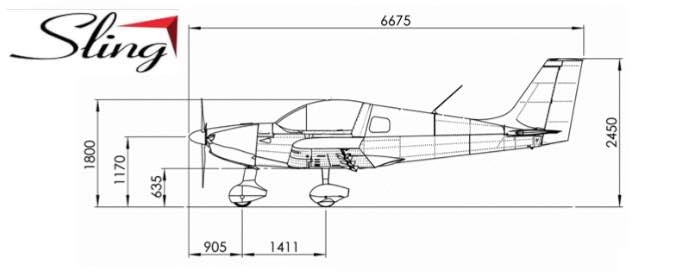For an E/A-B project there’s a seemingly endless list of small tasks. Some things are simply items in the KAI. Other tasks are things that come to mind as you think about how its all going to come together. Task creep just seems to happen. As long as it doesn’t get out of hand – it’s a good thing.
There is a daunting amount of wiring to support the avionics I’ve elected to squeeze into this airplane. Frankly, I’ve gone overboard. On the other hand, I’ve got all of the makings for a technologically advanced airplane (TAA), extremely well equipped for IFR training and cross-country adventuring. Finding good ways to dress and secure the wiring bundles is important. I’ve put a lot of thought into it and determined that an extra bracket will help me keep the harness up and out of the way. I designed and fabricated one.
Many things have to be squeezed into available space without undue conflict. Wiring, fuel lines, pneumatic lines, brake lines, valves, linkages and such. While there are plenty of best practices for how to do things in airplanes, finding ways to apply them to all of the situations that present themselves is what keeps this amateur builder scrambling for ideas. There’s always something new to learn. It’s fun. Challenging, but fun. Yes. It is. I think.
The fuel-injected Rotax engine has a somewhat complex fuel system. The fuel lines have a fuel supply circuit and a fuel return circuit. When you add filters and a duplex fuel selector and physical considerations, the plumbing details border on outrageous. How I do it is up to me. The KAI supplies only general information. I’m also introducing AN6 flare and push-lock swivel fittings in several places where barbs and ear clamps were originally called out and supplied. Figuring out where and how to mount and connect many of the fuel system components is ongoing.
Some tasks just need doing. Then they’re done. Cutting coax cables to length and adding connectors is straightforward enough. Done. The Rotax 30A Regulator B needs a heat sink that calls for the regulator to move from the fusebox to a nearby location on the engine mount. Done. There are a couple of GPS antennas for the PFD and G5 flight instrument that found homes on top of the GAD 29, above the center avionics stack.
Brake lines need to be routed. The time to do it was now. One line goes from the brake fluid reservoir, through the firewall, to just under where the throttle and brake quadrant is located. From there, another line originates at the pressure side of the master brake cylinder an runs to a compression T-fitting under the console compartment. Two other lines run from the T-fitting, down the main gear legs to each wheel. The combination of the 3 lines and the T-fitting were challenging to place. I should have done it earlier, when access was better. It’s done now.
I received some [evidently] old-style mounting hardware for the parachute activation handle, so I ended making a small bracket to secure the activation pull-handle to the back of the instrument panel. It’s nice. It’s done. My design turned out to be a slightly improved version of a bracket I eventually saw in a photo from the factory. Great minds think alike.
It was time for pneumatic lines to go in. I found a really nice way to route them from the left wing root, though the center console and up behind the instrument panel. Because I’ve seen that the Sling TSi documentation now shows 2 static ports, I added a second one in front of the LH fresh air NACA duct. Both of the equal length static port lines arrive at a push-to-connect T-fitting at the center console. A short line runs from the first tee to another T-fitting that provides two more equal length lines to the the G5 and to the GSU 25C ADAHRS unit. The pitot line has a single T-fitting that also splits between G5 and the GSU 25. The AOA line only goes to the GSU 25. All done.
